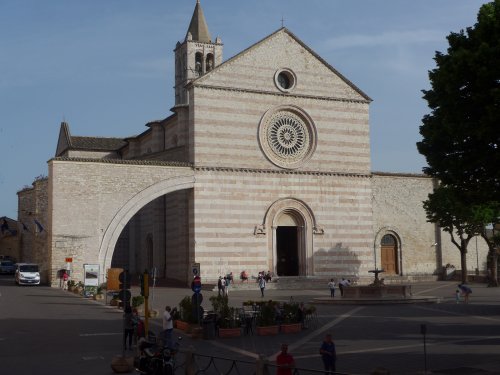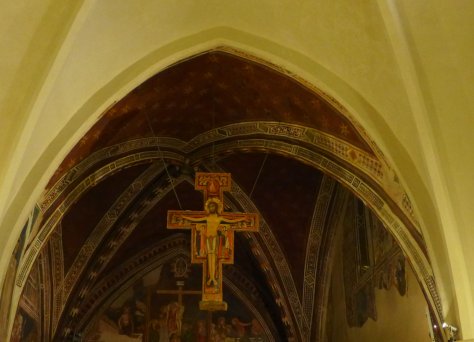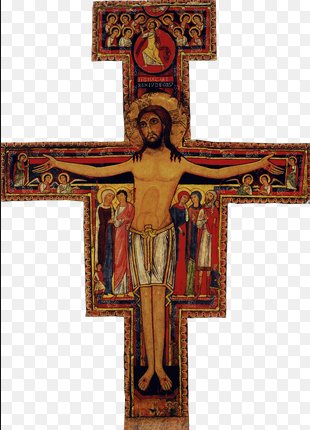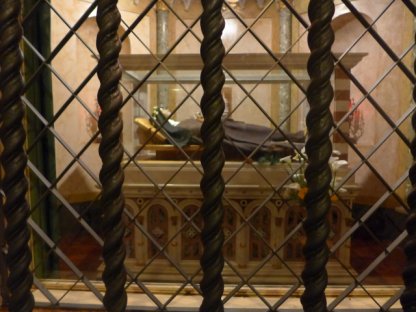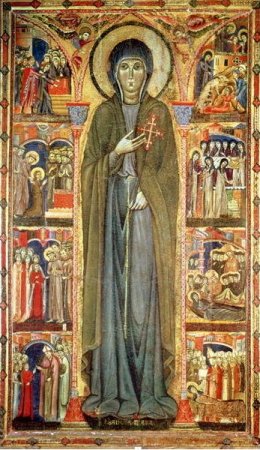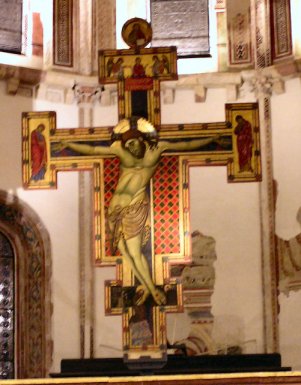|
Santa Chiara |
|
|
History When St Clare died in 1243 her body was taken to San Giorgio, an ancient church outside the city walls adjacent to the site of the present church. Eventually, after difficult negotiations, the nuns of San Damiano moved there. In 1257 the building of Santa Chiara began. In 1260 the body of St Clare was buried under the high altar; then, as so often happened in Assisi, they lost it. It was finally rediscovered in 1850. Exterior The
most striking feature is the series of enormous flying buttresses, added
to the church in 1351 – this is an area prone to earthquakes, after
all.
The ones on the south side form part of the monastery. The campanile is the highest in Assisi, though not all is original - the
conical top dates from 1926. |
|
|
|
|
|
|
|
|
|
|
| The church has two chapels. On the left is the chapel of Saint Agnes, sister of Clare: she is buried here with two other nuns brought here from San Damiano. On the right is the chapel of San Giorgio, built on the site of the original church of San Giorgio. It is now divided into two chapels. One is the chapel of the Sacrament, which contains various relics connected with Saint Claire and Saint Francis. The other part of the chapel contains the most precious object in the church, the San Damiano Crucifix, brought by the nuns from San Damiano. | |
|
|
|
|
The crypt |
|
|
|
|
| Art Much of the art here is attributed to an unknown artist known, somewhat unimaginatively, as the Maestro di Santa Chiara. This includes the crucifix above the main altar, in Christus Patiens style, an interesting contrast with the Christus Triumphans of the San Damiano cross. |
|
|
|
|
|
|
|
| The remaining frescoes
are somewhat later, and attributed to Palmerino di Guido , who is also known as
the Maestro Espressionista di Santa Chiara. Probably the best surviving
fresco is in the vault crossing. This shows The Virgin and St Clare,
Saints Agnes of Rome and Agnes of Assisi, Saints Catherine of Alexandria
and Margaret (or possibly Mary Magdalene); and Saints Lucy and Cecilia. |
|
|
|
|
| Assisi churches page 1 Sacred places home page Home page - explore the site |
|

